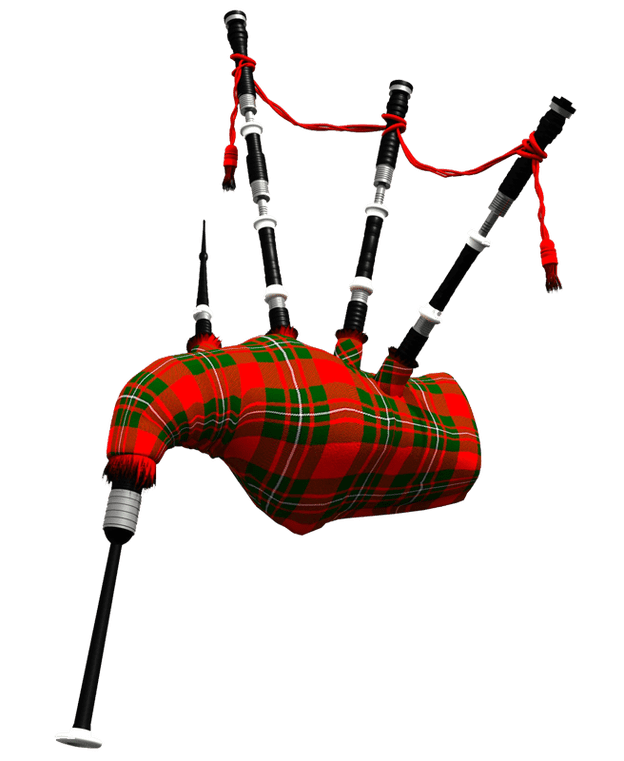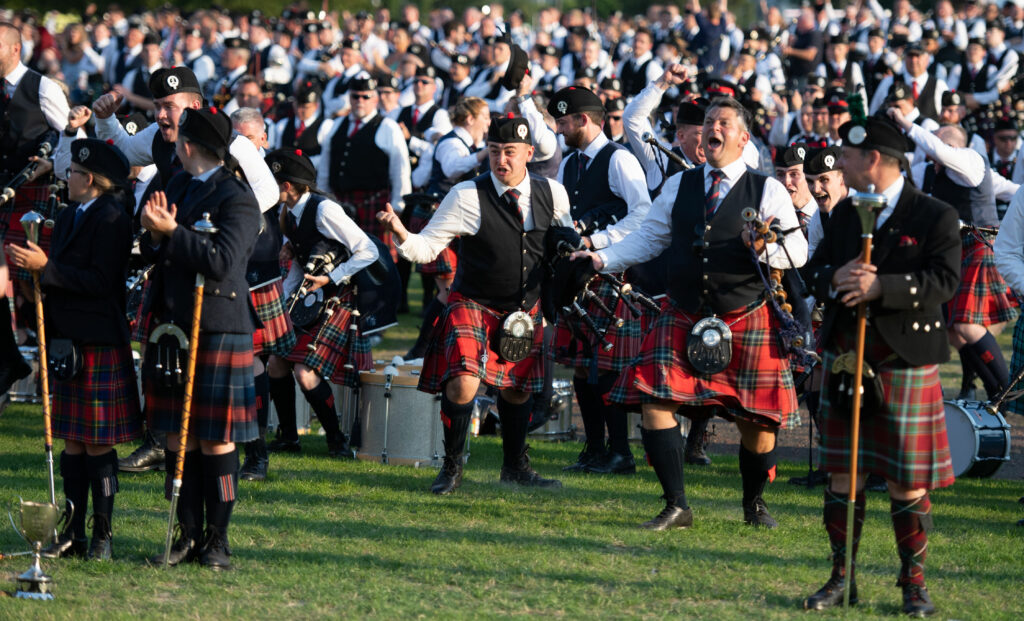
4 minute read
Bagpipes
You either love them or you hate them! While some folks describe the shrill sound of the pipes as pleasing as “a bag of strangled cats,” others revere the music, claiming their sound brings them to emotional tears. Listen up to these facts about bagpipes, which according to surveys, rank among the highest on the list of most annoying of musical instruments.
• The first bagpipes were made of the skin of small dead animals, such as goats or sheep. The carcass was cleaned out and turned inside out. The pipes, made from hollow stalks or bamboo, were sewn where the animal’s neck and limbs used to be. Although most of today’s bagpipes are made of synthetic materials such as plastics, metal and cloth, some pipers hold on to tradition with skin bagpipes.
• There are many parts to a set of bagpipes, all connected to the bag. The chanter is the pipe that creates the melody. The piperʼs fingers cover the holes in the pipe to produce different notes, similar to how a clarinet is played, except that the chanter can produce just nine notes. The drones, usually a set of three, are made from bamboo or wood and provide the constant pitch and tone of the instrument. The drones have small holes at the outer tips where air escapes.

• Varying tones are achieved by applying pressure to different areas of the bag. The blowstick is the mouthpiece of the bagpipe which the piper uses to blow air into the bag. There must be constant air flowing into the bagpipes at all times. The chanter reed consists of two bamboo slivers, similar to the reed of an oboe.

• Outdoor decibel levels for bagpipes are about 110 dB, with indoor levels up to 116 dB. A single piper making music in the Scottish Highlands can be heard up to 10 miles (16 km) away. Don’t bother asking pipers to turn down the volume – bagpipes have no dynamics, and the sound cannot be adjusted. To compensate, pipers adjust the tempo or stretch out the tones.

• Although we might think that bagpipes are Scottish in origin, they actually have their history in several other places, including the Balkan countries, India, Libya, Sweden, Egypt, ancient Mesopotamia, and Italy. It’s believed that the invading Romans brought the bagpipes to Scotland.
• It’s also believed that the Roman emperor Nero was a skilled piper. Although we’ve heard that Nero played the fiddle as Rome burned in 64 A.D., it’s more likely it was pipes he was playing. Today, the country with the most bagpipers is New Zealand, not Scotland.

• Bagpipes have a long history as war instruments on the battlefield. Scottish pipers first marched troops into battle at the 1746 Battle of Culloden, where the Jacobite army was defeated by British troops. In the 1700s, many pipers were hanged for owning one as it was considered an instrument of war. During World War I, more than 3,000 pipers marching the troops were killed, with the sound of the pipes making them easy targets. Several hundred more pipers were killed during World War II.

• A Scottish police officer named Danny Fleming owns the world’s largest bagpipes collection. His 105 different sets, some of which have gold, silver, and ivory settings, are valued at over $150,000.
• Every year since 1947, the city of Glasgow, Scotland has hosted the World Pipe Band Championships.

Several bands of pipers from all over the world compete for the title. The highest honor of Grade One was held by Scottish bands until 1987, when Canada’s 78th Fraser Highlanders became the first overseas band to capture the title.



